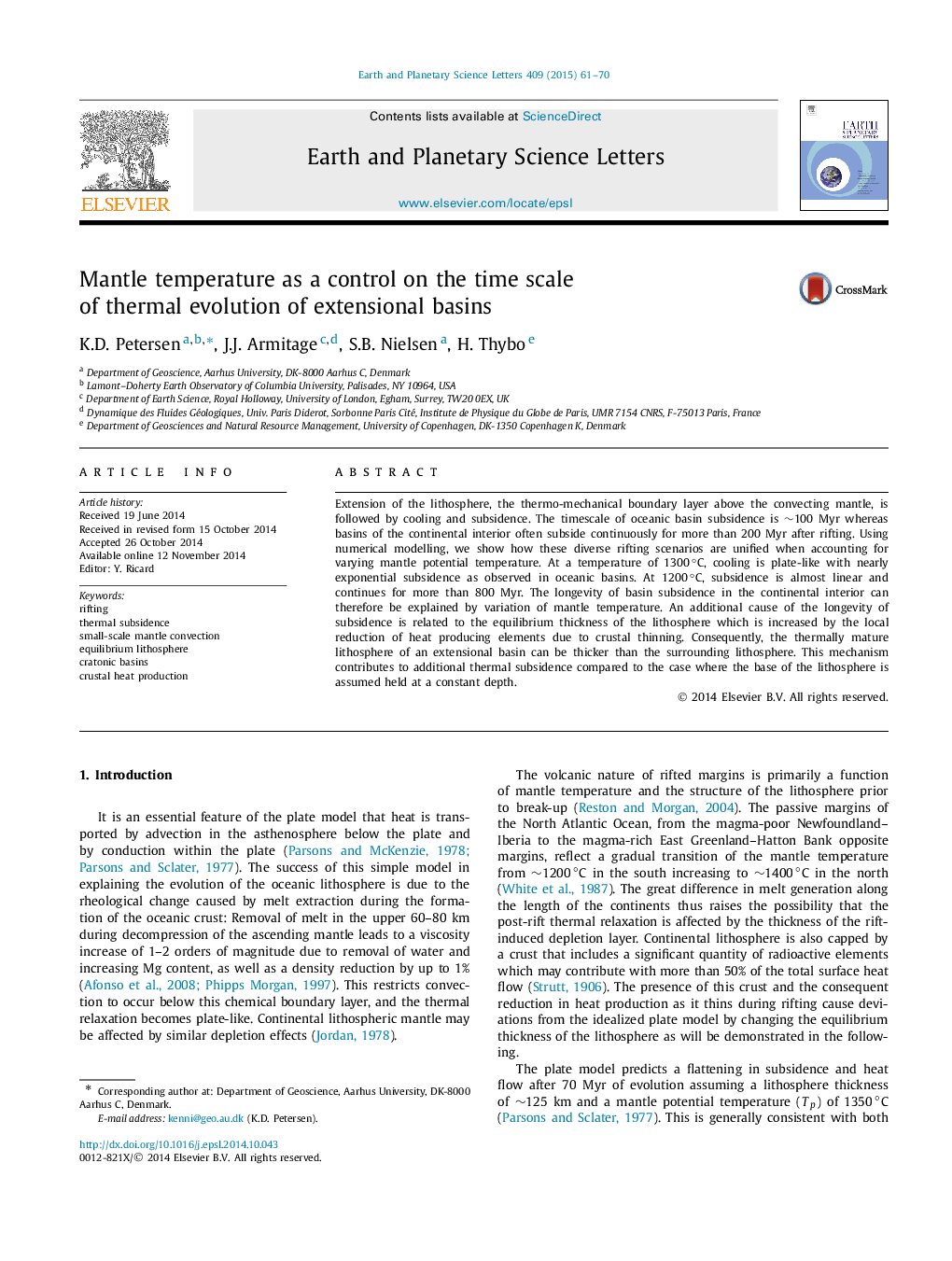| Article ID | Journal | Published Year | Pages | File Type |
|---|---|---|---|---|
| 6428813 | Earth and Planetary Science Letters | 2015 | 10 Pages |
â¢Time scale of thermal relaxation upon rifting increases with decreasing mantle temperature.â¢Protracted and constant-rate subsidence of continental interior basins is consistent with reduced mantle temperature.â¢Thicker than original equilibrium lithosphere develops below rifts due to reduced crustal heat production after thinning.
Extension of the lithosphere, the thermo-mechanical boundary layer above the convecting mantle, is followed by cooling and subsidence. The timescale of oceanic basin subsidence is â¼100 Myr whereas basins of the continental interior often subside continuously for more than 200 Myr after rifting. Using numerical modelling, we show how these diverse rifting scenarios are unified when accounting for varying mantle potential temperature. At a temperature of 1300â°C, cooling is plate-like with nearly exponential subsidence as observed in oceanic basins. At 1200â°C, subsidence is almost linear and continues for more than 800 Myr. The longevity of basin subsidence in the continental interior can therefore be explained by variation of mantle temperature. An additional cause of the longevity of subsidence is related to the equilibrium thickness of the lithosphere which is increased by the local reduction of heat producing elements due to crustal thinning. Consequently, the thermally mature lithosphere of an extensional basin can be thicker than the surrounding lithosphere. This mechanism contributes to additional thermal subsidence compared to the case where the base of the lithosphere is assumed held at a constant depth.
Graphical abstractDownload high-res image (204KB)Download full-size image
